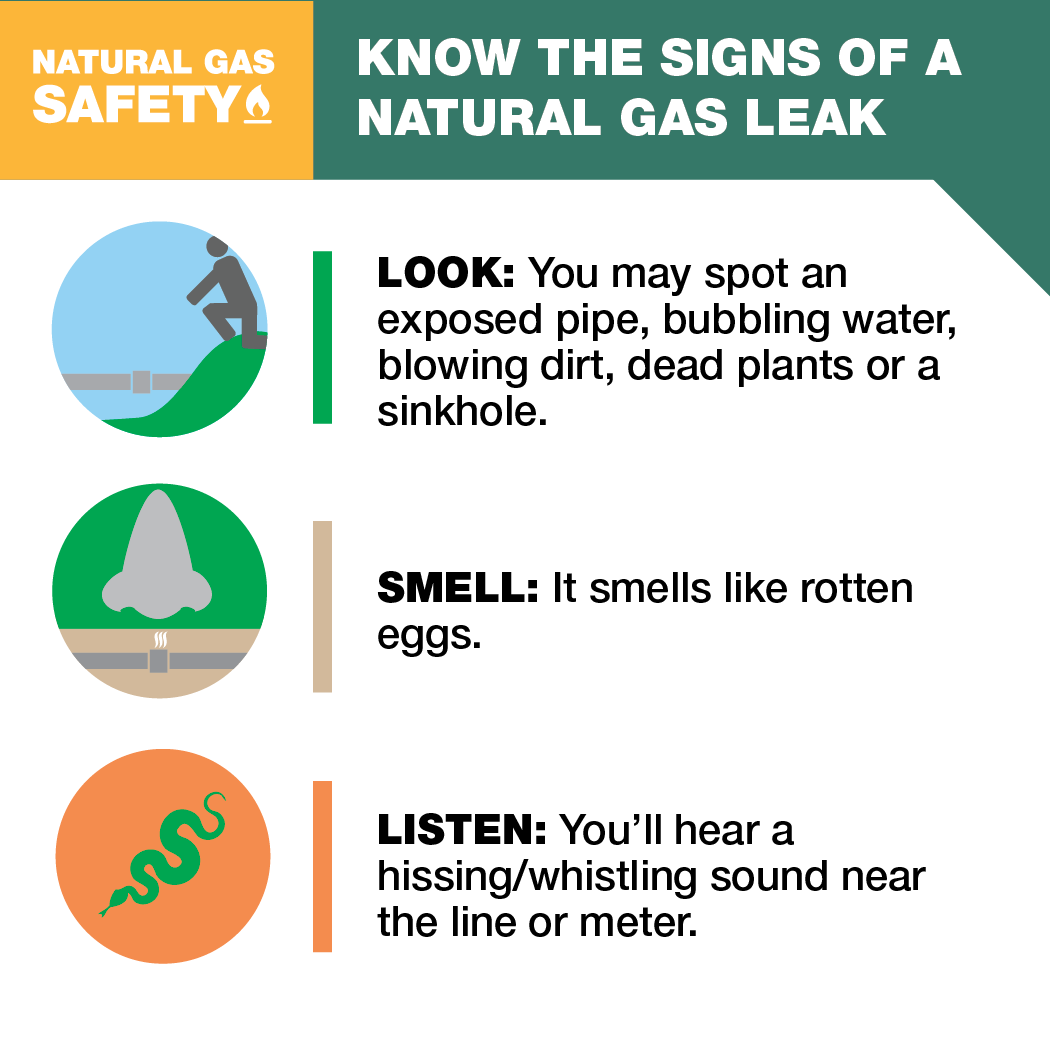Gas Safety
It is extremely unlikely a gas leak will occur, but you should always be prepared. Natural gas is extremely flammable and if released and contacted by an source or ignition will ignite, and possibly explode. We are committed to protecting you, your property and the environment, and by implementing programs like these we are better equipped to detect the possibility of a leak happening prior to it actually occurring. These safety guidelines will provide you with important information to help you avoid dangerous activities that could lead to a gas leak, and what steps to take if a natural gas leak were to occur.
What you should DO if a leak occurs
DO leave the home, building and area of the suspected leak, and get to a safe area.
DO call 911 and the pipeline company from a safe distance.
DO warn others to stay out of the area.
What you should NOT DO if a leak occurs
DO NOT touch, breathe or make contact with the leak.
DO NOT light a match, turn light switches on and off, use a cell or home phone, or do anything to create a spark.
DO NOT attempt to extingish any fire.
DO NOT attempt to operate any valves.
Recognizing a suspected leak
Using your sense of sight, sound and smell will help you recognize a suspected leak. Here's what you should look for:
Sight - Natural gas is colorless, but vapor and "ground frosting" may be visible at high pressures. A gas leak may also be indicated by bubbles in wet or flooded areas, distinct patches of dead vegetation, dust blowing from a hole in the ground or flames if the leak is ignited.
Sound - A hissing or roaring noise along the right-of-way of a pipeline could also indicate a natural gas leak.
Smell - Transmission natural gas has a stale petroleum/hydrocarbon smell. Before it is delivered to your home, natural gas has mercaptan added which gives the gas a sulphur or "rotten egg" smell to help detect leaks. If the gas is from an underground leak, the odorant may be filtered out by the ground.
Call before you dig
99% of all incidents involving injury, damage to property and the environment, or utility service outrages can be at least avoided by making a free call to 811 at least two to three business days prior to excavating. Examples of activities that require a call to 811 include:
- building a fence
- installing a pool
- landscaping
- installing a sprinkler system
Once the lines have been marked, you will know their approximate location and can safely begin your dig, following safe excavation practices.
How to recongize the location of a pipeline
Markers are located in the pipelines right-of-way and indicate the approximate location, but not the depth, of a buried pipeline. Although not present in certain areas, these can be found at road crossings, fence lines, and street intersections. The markers displays the product transported in the line, the name of the pipline operator, and a telephone number where the operator can be reached in the event of an emergency.
Digging safely around pipelines
State laws require you to maintain minimum clearance, or tolerance zone, between the point of excavation and marked pipeline. Even the most minor damage to a pipeline can have serious consequences. If you cause or witness even minor damage to a pipeline or its protective coating, do not cover up or attempt to repair the pipeline. Evacuate the area and call 911 and the pipeline company immediately.


 Gas Safety
Gas Safety